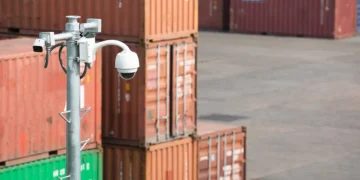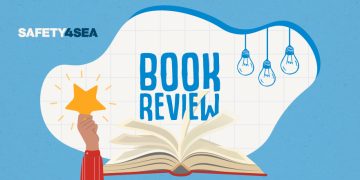At the beginning of 2021, RightShip and INTERCARGO jointly launched a new quality standard for the dry bulk sector; The so called DryBMS, currently under review and open for feedback, features guidelines which focus on 30 areas of management practice across the key 4Ps risk areas in vessel operations: Performance, People, Plant and Process.
Experts of a recent SAFETY4SEA Talk, Capt. Mark Bull, Director, Trafalgar Navigation Limited ; Capt. Pradeep Chawla, Managing Director, QHSE and Training, Anglo-Eastern Ship Management Ltd ; Capt. Panagiotis Nikiteas, HSQE Manager/DPA/CSO, Maran Dry Management Inc. and ; Konstantinos Petrakis, HSQ Manager/DPA, Charterwell Maritime S.A. shared their perspectives on how DryBMS standard will enhance operational performance, recalling lessons learned from ISM and TMSA maturity and Implementation
Starting the conversation, Capt. Cawla noted that the dry bulk carrier industry is very globalized and fragmented. This standard is a good tool for operators to improve themselves but it all depends on the way is implemented. In his turn, Capt. Nikiteas agreed, stressing that industry was ready for this standard.
‘’The fact the RightShip and Intercargo, representing hundreds of different owners and operators as well as terminals and shippers around the world, worked in synergy, despite their initial separation of ideas, signifies that there is willingness to cooperate and create a standard that can drive the dry bulk industry one step ahead.’’
…commented Capt. Nikiteas, highlighting it is important that the industry will commit to a common standard that offers equal opportunities. ‘’This is the result of great cooperation amongst all parties involved. It is up to us to make it work!’’ Capt. Nikiteas added.
On the other hand, Mr. Petrakis is not sure whether the industry was ready for the DryBMS standard; however, there was certainly a gap. He also pinpointed that although the initiative started from RightShip and followed by Intercargo, it is important that at the end of the day, they managed to find a common solution.
‘’The main difference between DryBMS and TMSA is that the fist one came out from the operators. As such, the elements were built up in a more realistic way, reflecting operators’ needs and practices of the dry bulk industry. Now it remains to be seen how this tool will affect small operators and the whole industry.’’
…Mr Petrakis further mentioned.
Capt Mark Bull welcomed this new standards as well, noting that there have been many safety standards ie. ISM Code, TMSA, and now we reached the point that we have a standard for the dry bulk sector.
‘’It is also welcome the fact that this time people are invited to comment the standard and provide feedback . This is a positive move, making DryBMS a more practical standard for real life needs’’
..Capt. Bull commented.
Citing the positive ingredients of DryBMS, Capt. Pradeed Chawla finds it very detailed and not difficult to understand it. Also, the fact that it is open to comments shows there is room for improvement. Although first comments were submitted by end of April, more are expected to come in due course since this is a market first, Capt. Chawla noted. Furthermore, Capt. Nikiteas noted that for the first time we put people, even those ashore, in the spotlight.
‘’I think the standard comes for proper housekeeping of the safety systems of the companies. Of course there are elements that companies will hear about for the first time. The most critical part is the human element’’
…Mr Petrakis agreed and added that with DryBMS, dry bulk operators will invest a lot of time and efforts in order to fulfill its requirements however, that will be for the good of the industry.
Capt. Mark Bull noted that sections and all activities are divided in a proper way while where there are any inconsistencies, feedback will help to solve arising issues.
With regards to the implementation, Capt Chawla highlighted the importance of finding the right balance for enhanced transparency.
‘’The scope of every quality industry standard is to raise the bar and bring the people to commit and improve. However there are operators who are hesitant to report their findings, fearing of being penalized. This would be the biggest challenge for the implementation of DryBMS.’’
..Capt. Chawla said.
Based on past experience, he estimated that the standard will take 3 to 5 years to reach a mature level since its implementation. Capt. Nikiteas agreed with this estimation mentioning that the standard stabilizes several key points, i.e. ‘’The process is led and managed by a senior figure in the organization’ and ‘’ Everyone should have the opportunity to assess and evaluate the role against the subject area expectations. The staff involved in self assessing each subject areas should identify other sources etc’’
Mr. Petrakis didn’t attempt to estimate how long it will take for the maturity curve of DryBMS since there are not many data available at the moment.
‘’We are close to the final revision to come out but we are not sure when and how DryBMS will start be implemented in every organization; for example, who is going to monitor the system. On the other hand, for each company is quite easy to prepare a system and get ready with the requirements, however, there are many sectors being affected as well as the human element. Companies that have already operated under the TMSA standard are familiarized, but the majority, I believe, they are not ready; as such, it will take some time.’’ Mr. Petrakis stressed.
In this context, Mr Apostolos Belokas, Managing Editor at SAFETY4SEA and panel moderator noted that when TMSA came out, in late June 2004, there was a lot of negativity in the market.
‘’I can recall from the tanker market that it took a number of years in order to arrive to a mature phase, not with the offices but with the ships; this is the challenge’’ Mr. Belokas said.
‘’If you have a robust system and you are aware of the tanker, you know what is coming and it won’t take long for the new system to run effectively.’’ Capt. Bull further commented and highlighted that there is need for qualified individuals. For example only qualified persons can conduct SIRE inspections, ISM Audits and RightShip inspections. Hence, this is something that we need to take into account with the new standard.
Concluding the discussion with lessons learned from ISM Code and TMSA maturity and implementation, Capt. Chawla advised, firstly, to have patience and secondly, there is need for pragmatism and to avoid any negative feelings when the implementation phase will start.
‘’The dry bulk sector is more fragmented in comparison to tanker sectors. The new standard should not be judged by the best companies in the market; its effective implementation will be seen from the number of poor quality operators who will start working better, striving to be successful. ‘’
…Capt. Chawla said.
Capt. Nikiteas noted that still many people complain about TMSA, paperwork and tick tock exercises and they are right at some point, adding that effective implementation is not based on money investments.
‘’It is not a matter of money spent; what we have learned from TMSA and ISM code is that true commitment matters as well as actual focus on human element and not putting profit as number one priority. Only companies which have managed to put these as key priorities have actually managed towards TMSA and ISM implementation.’’
‘’At first seafarers may consider that more work will be required for this new standard. What the industry doesn’t realize is that in the last 25 years we have introduced a lot of new regulations requiring many records. So every task requires more time for every seafarer. For every seafarer, to accept it as an improvement on his/her life is going to be difficult; thus how we are going to implement DryBMS is going to do a difference.’’
…Capt. Chawla mentioned.
Explore more by watching the video herebelow

































































